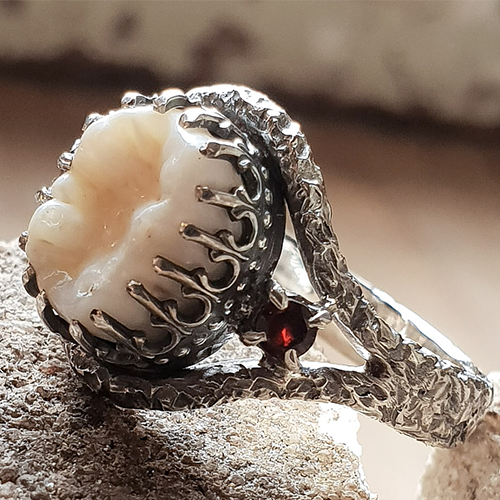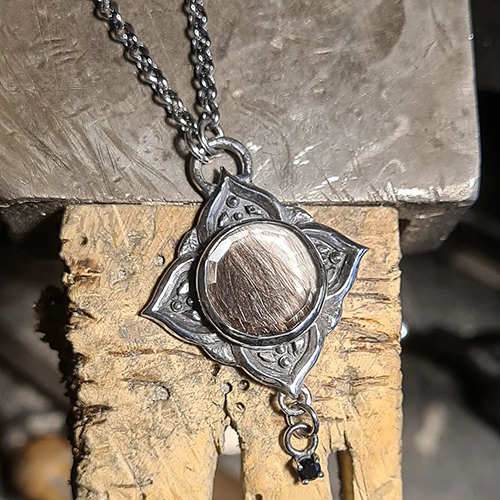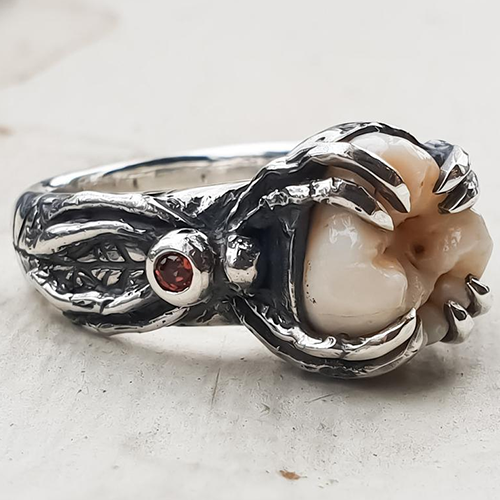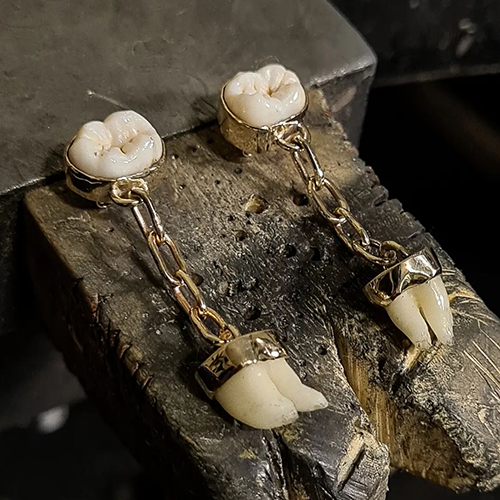Jacqui Williams owns Grave Metallum Jewellery and manufactures custom pieces using human teeth at her studio in Melbourne.
Williams began her career as a jeweller at Melbourne Polytechnic in 2016 and launched her business during the COVID pandemic.
She told ABC News that she first incorporated teeth into jewellery at the request of a friend and soon learned that these pieces help people cope with grief.
"I've always had a bit of a morbid curiosity with life and death," she said.
"I've dealt with a lot of death in my life, especially from a young age, so I guess it's a way for me to deal with that. But it's also a way to help other people deal with grief."
While it’s not a form of jewellery that suits everyone’s taste, human teeth have been used in jewellery and adornments for thousands of years.
Using jewellery featuring teeth became an increasingly popular way to moralise the deceased during the reign of Queen Victoria in the 19th century.
That trend soon expanded to commemorate important milestones, including using children’s milk teeth in necklaces, rings, and brooches.
"It's definitely not a new concept at all. The Victorians used them, especially children's milk teeth. It wasn't necessarily to commemorate the dead all the time. It was also to celebrate life,” Williams said.
"Teeth have been used in jewellery since people started adorning themselves. It's not for everyone, but it brings about a conversation, at least."
One study by the University of Copenhagen revealed that at an archaeological site in Turkey, researchers discovered two 8,500-year-old human teeth, which had been used as pendants in a necklace or bracelet.
|
GRAVE METALLUM JEWELLERY |
 |  |
| Tooth rings |
|
 |  |
| Human hair necklace | Tooth ring |
|
 |  |
| Teeth earrings |
|
More reading
The Age of Individualism
Personalising your jewellery - How do you want it?
Digging up jewellery: How ancient artisans help map human history
Weird and wonderful
It's Personal: Defining Personalised Jewellery